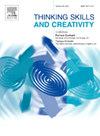Hands up, minds on! Learn & play landscapes: Systematic review
IF 3.7
2区 教育学
Q1 Social Sciences
引用次数: 0
Abstract
Opportunities for play in public spaces are crucial for supporting children's health and development. Over the past decade, numerous studies have explored the intersection of play, learning, and the design of playful landscapes, highlighting the benefits of outdoor play and its connection to learning outcomes. Efforts have also focused on creating playful environments within urban settings tailored to children's educational needs. Despite these efforts, systematic research in this field remains limited. This study aims to fill this gap by conducting a comprehensive review of existing literature, addressing key questions such as What approaches have researchers employed in studying learn & play landscapes, Who has conducted research on learn & play landscapes, and what fields of study do they represent, Who was identified as the target audience in this research, How have researchers in learn & play landscapes developed their studies, and what methods did they employ, Where did learn & play landscapes research attract the most interest globally, and which land-uses were most frequently explored and emphasized in these studies and, When did research on playful, learning-oriented landscapes start to be explored, and during which periods did learn & play landscapes receive the most attention. The answers to these five questions represent the novelty of our work in the learn & play landscapes field.
This paper reports on the findings of a systematic review of 33 peer-reviewed empirical publications from 2005 to 2024. The findings reveal three key challenges for future work: (i) greater appreciation and engagement with experts from different fields; (ii) identifying more public places with the potential to become learn & play landscapes; and (iii) using accurate measurement tools in neuro-architecture to better assess the effectiveness of learn & play landscapes. The authors invite researchers, practitioners, and policymakers to work closely with children, engage with their diversity, and explore interdisciplinary and interprofessional avenues to promote equal opportunities for play across the built environment.
求助全文
约1分钟内获得全文
求助全文
来源期刊

Thinking Skills and Creativity
EDUCATION & EDUCATIONAL RESEARCH-
CiteScore
6.40
自引率
16.20%
发文量
172
审稿时长
76 days
期刊介绍:
Thinking Skills and Creativity is a new journal providing a peer-reviewed forum for communication and debate for the community of researchers interested in teaching for thinking and creativity. Papers may represent a variety of theoretical perspectives and methodological approaches and may relate to any age level in a diversity of settings: formal and informal, education and work-based.
 求助内容:
求助内容: 应助结果提醒方式:
应助结果提醒方式:


